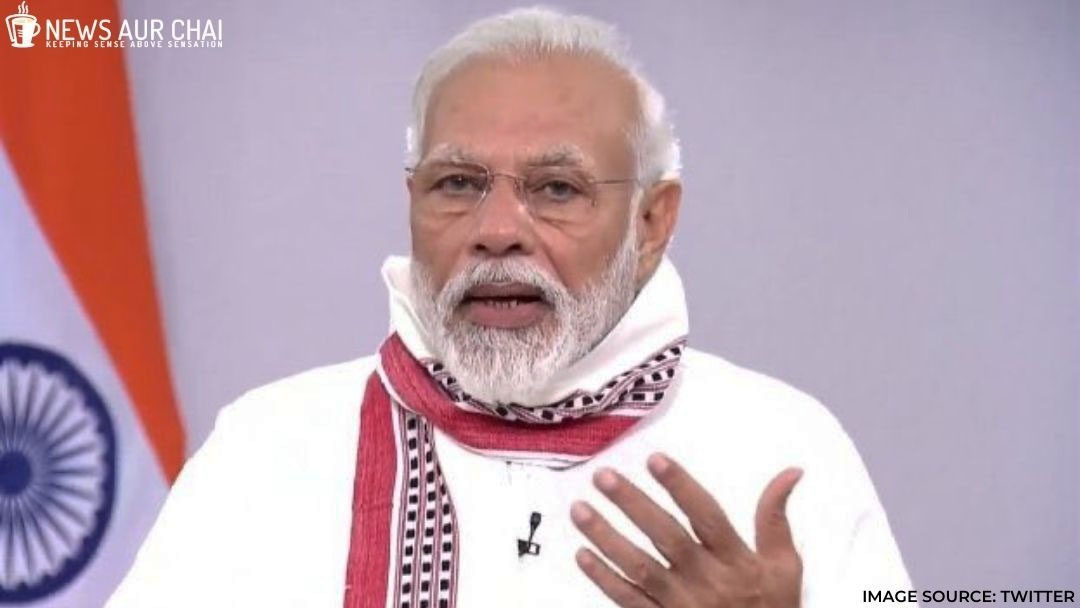
On April 14, during a televised address, Prime Minister Narendra Modi said “I salute all you citizens,” thanking Indians for their support in the fight against the virus, while extending the lockdown till May 3.
India reported 10,477 active cases and 414 deaths as on April 16.
Under the lockdown, only essential businesses – such as groceries and pharmacies – are allowed to remain open. City transport services are limited to emergency staff and those with special travel passes. All trains and flights have been suspended.
While announcing the extension Prime Minister said that the rules could tighten further over the next week, but he did not give more details. He said the government would issue “guidelines” soon.
He stated that some restrictions in areas further away from infection hotspots would be eased on April 20, to help poor, migrant workers, daily-wage workers and farmers.
As per his speech till April 20, every nook and corner of the nation would be under strict surveillance to make sure the virus is contained to the maximum.
Once the area is free from the virus that is successful in this test can enjoy relaxation from the restriction.
According to official records, South Asian nations have so far been comparatively unscathed by the pandemic.
However, with India having some of the most crowded cities on the planet, there are concerns that numbers could skyrocket and overwhelm its unstable healthcare systems.
Some experts have also claimed that India has not conducted enough tests and that the true picture is yet to come out.
The economic and social cost of Indian Lockdown
India’s crushing lockdown has already caused economic disruption and social distress.
It has hurt the economy immensely. According to various independent assessments, joblessness has risen sharply. As per the World Bank, the already stumbling economy of India is now expected to grow between 1.5-2.8 per cent in 2020-21 – well below the level needed to provide jobs for the millions coming into the labour market every month.
Migrant workers, the backbone of crucial service industries, have either fled their shuttered workplaces or are stranded in homeless centres in cities. The thriving informal economy is in tatters.
The accessibility of necessities like food, medicine and emergency medical care for non-COVID-19 patients has become difficult for the poor.
Even after facing all these fallouts, lifting the lockdown amidst increasing positive cases was out of the option. Nonetheless, the extension of lockdown beyond May will distress the economy as well as the livelihood of the people.
Some key economic activity – farming, transportation of goods, wholesale markets, essential gig economy services – has to reopen by following social distancing and hygiene protocols.
As announced by Prime Minister, the Union Home Ministry on April 15, had released guidelines detailing on economic activities that that will be permitted after April 20, in certain areas keeping in view the interests of farmers and daily wage earners.
As per the guidelines, the economic activities that will be permitted are mostly related to the agricultural sector and job creation while strictly adhering to protocols in those areas where safety is paramount to contain the spread of COVID-19. State/UTs/district authorities will operationalise these based on compliance with existing guidelines. These will not be applicable to containment zones demarcated by respective states and UTs.
However, how far the relaxation can be brought about will depend on the success of the containment of the virus.
India’s Weaker section the worst hit
After the lockdown was announced on March 24, millions of migrants fleed to their villages, wherein some scummed to death on the way, while others were neglected by locals when they made it back to their villages.
Some have been stranded in cities in cramped, unsanitary conditions where the virus could spread quickly.
Every state is trying to do their best to feed these daily workers so that hunger might not overtake the pandemic.
On the one side, farmers are complaining about the lack of workers to harvest the winter crops, while on the other hand there aren’t enough transportation facilities to carry these crops to the markets.
COVID-19: Invisible assassin
Reserve Bank of India (RBI) Governor Shaktikanta Das called the novel coronavirus an “invisible assassin” that could desolate Asia’s third-biggest economy.
The national restaurants association of India, which said its members employed seven million people, warned on April 13, that there could be “social unrest” if it did not receive financial relief.
The commerce ministry has also reportedly urged the government to consider restarting more activities “with reasonable safeguards” even if the lockdown is extended.
Even before the pandemic, the Indian economy was sputtering with unemployment at its highest in decades. According to the Centre for Monitoring Indian Economy (CMIE) the urban unemployment rate was at 9.6 per cent, and rural stood at 7.8 per cent in August 2019
Prime Minister’s announcement came amid debates in countries around the world on how to lift restrictions while avoiding a spike in new infections.
World Health Organization chief Tedros Adhanom Ghebreyesus has warned against hastening reckless into lifting restrictions, emphasising that only a vaccine can entirely halt the spread.
Experts around the world are closely watching the virus’ spread in India, which has a population of 1.37 billion. They fear that the country – with its densely-populated cities and weak public health system – is especially vulnerable to the pandemic’s worst outcomes.
Unless the testing is increased an exact picture of India’s infected rate can’t be predicted. Thus the upcoming weeks are crucial as far as India is concerned to know how badly the pandemic has invaded into the population and how dangerously it has affected both economy and social life of people.






One Comment